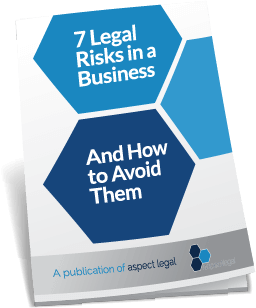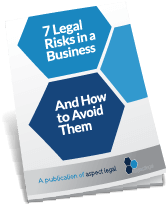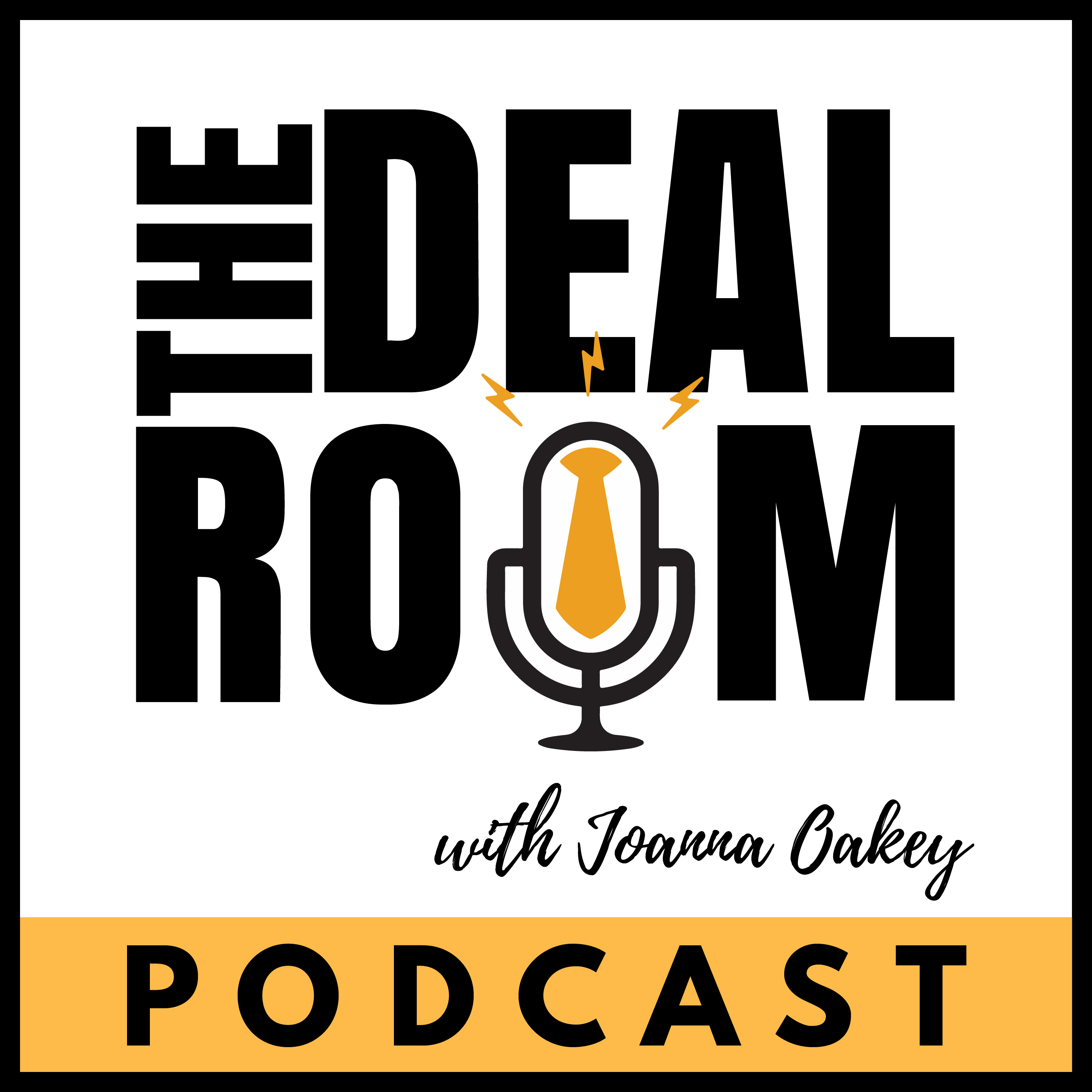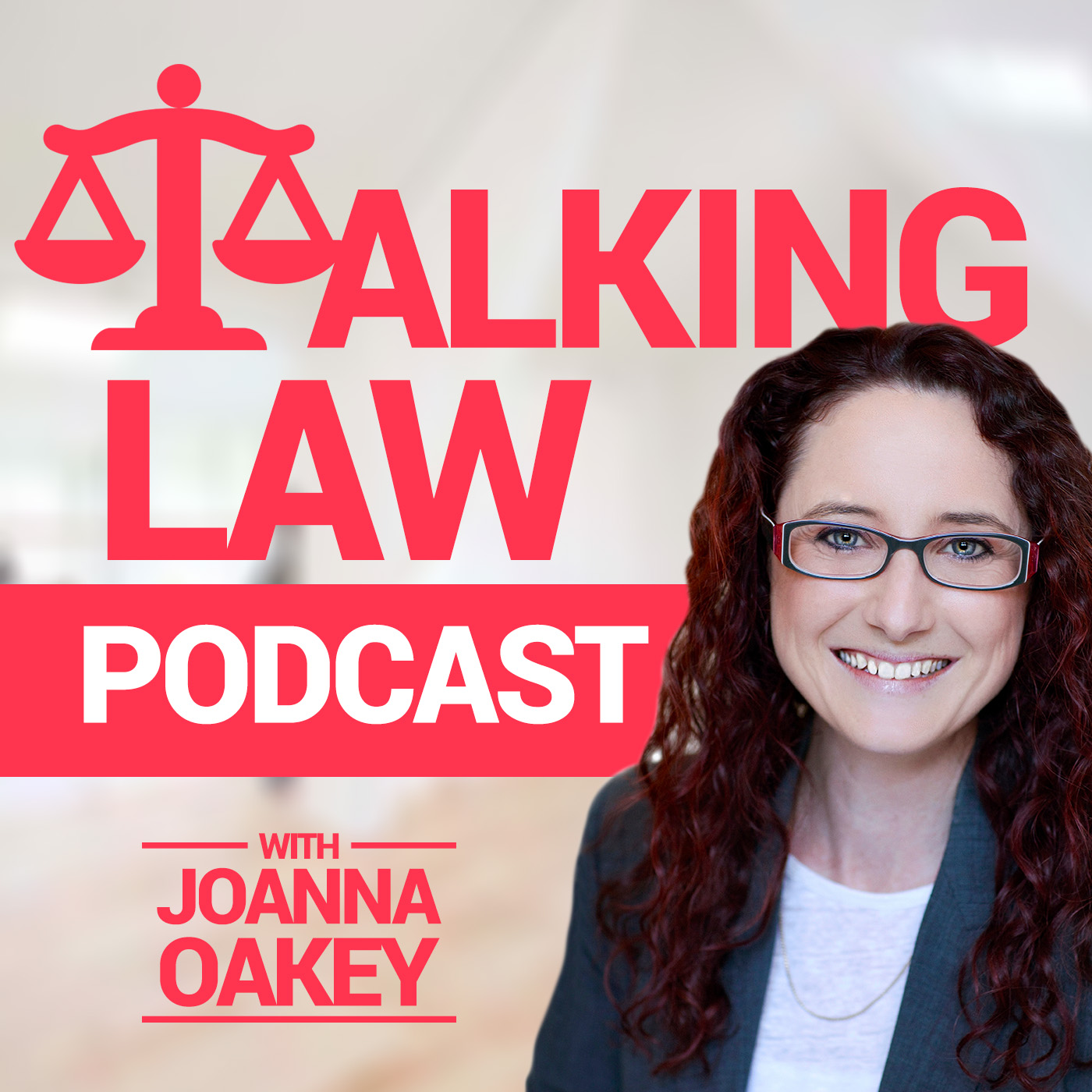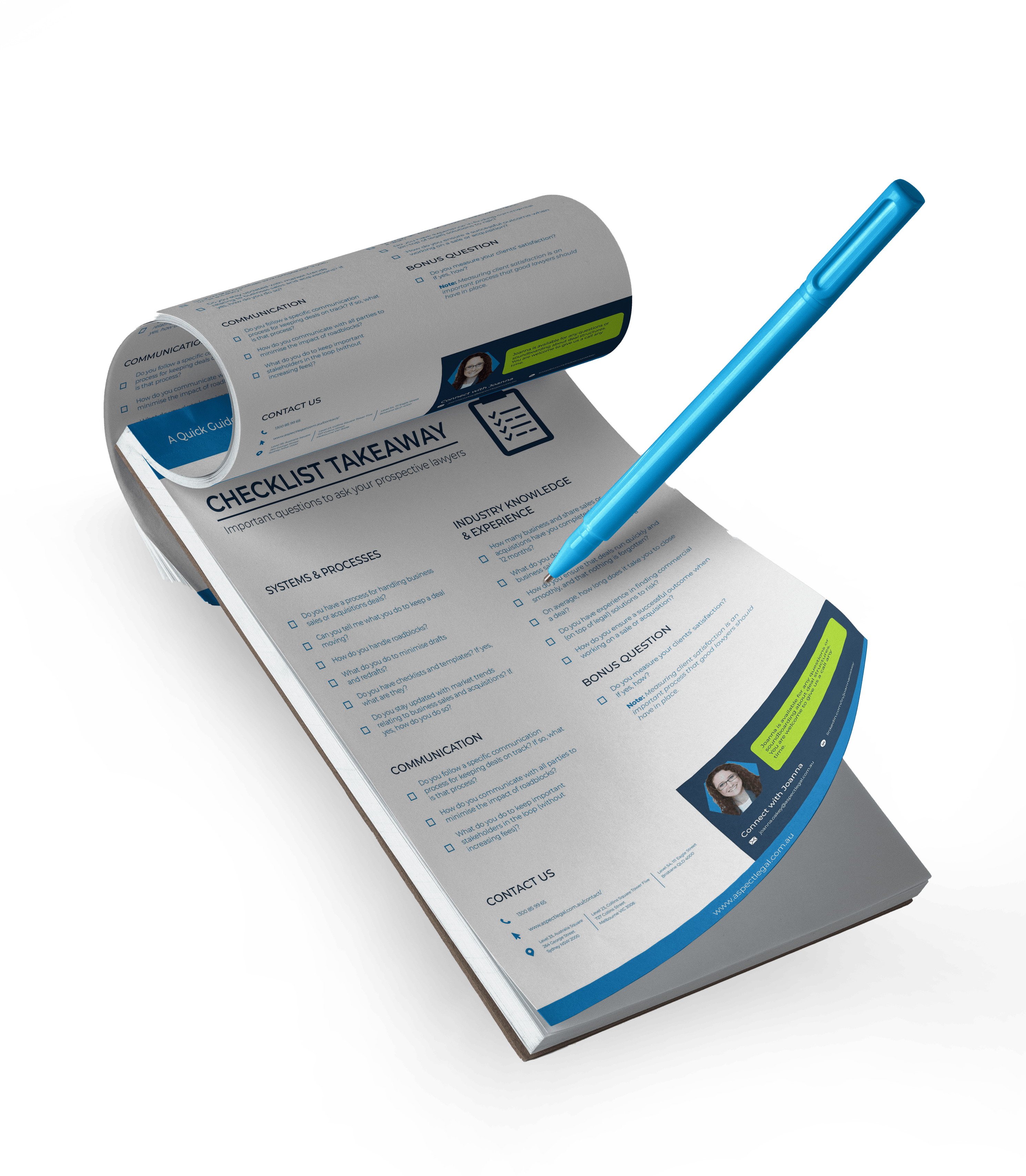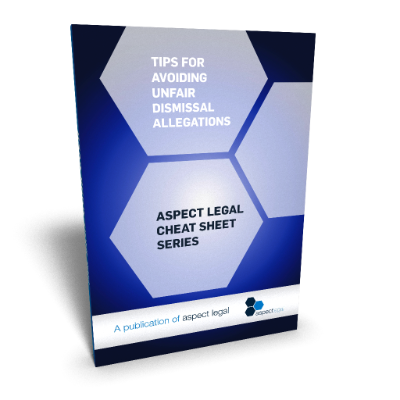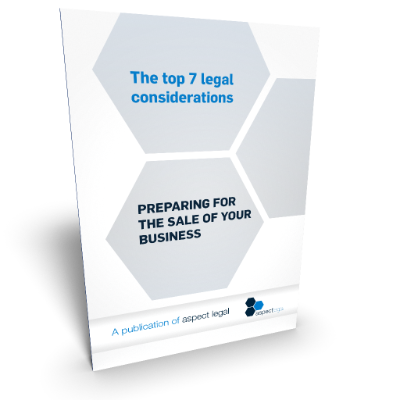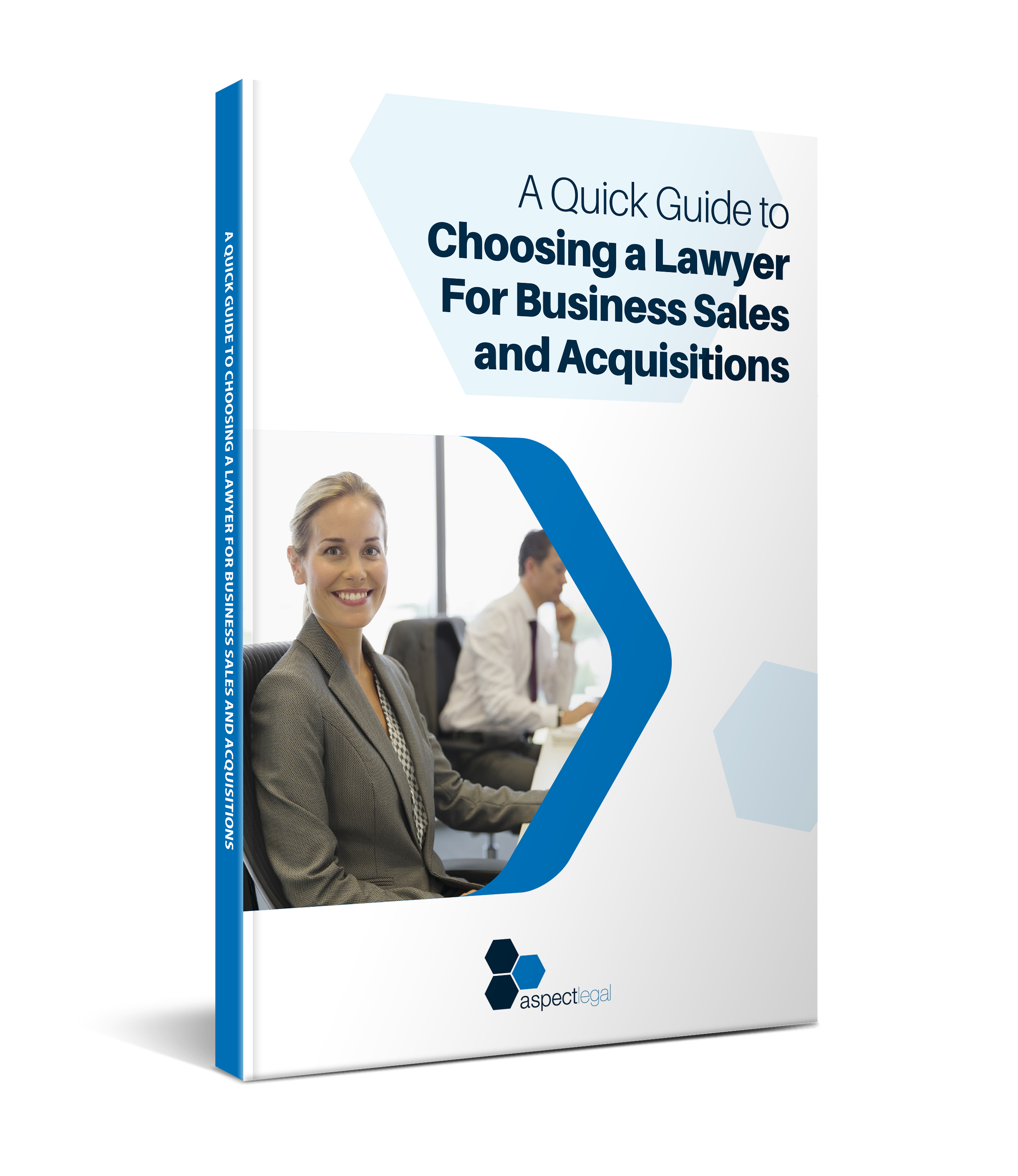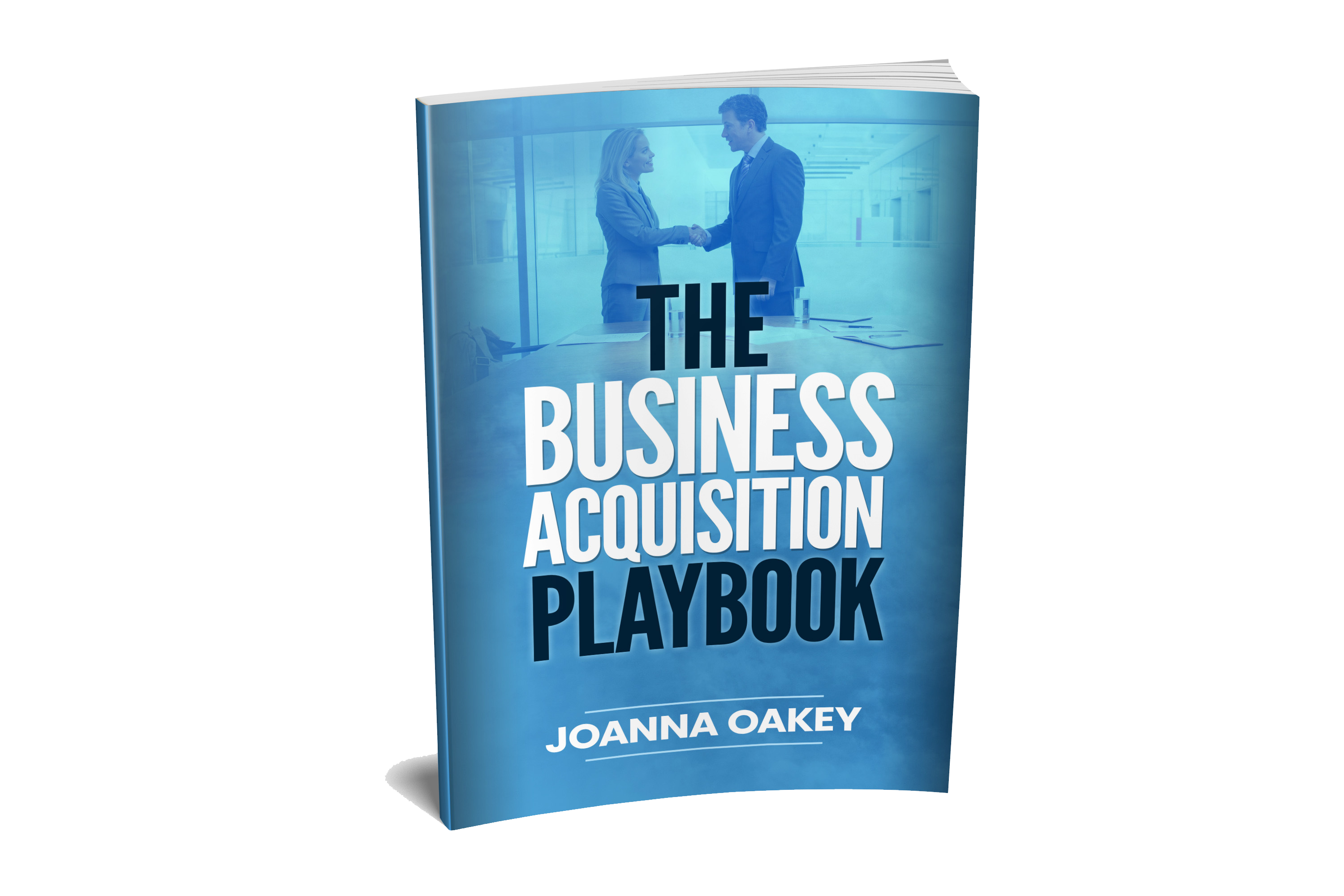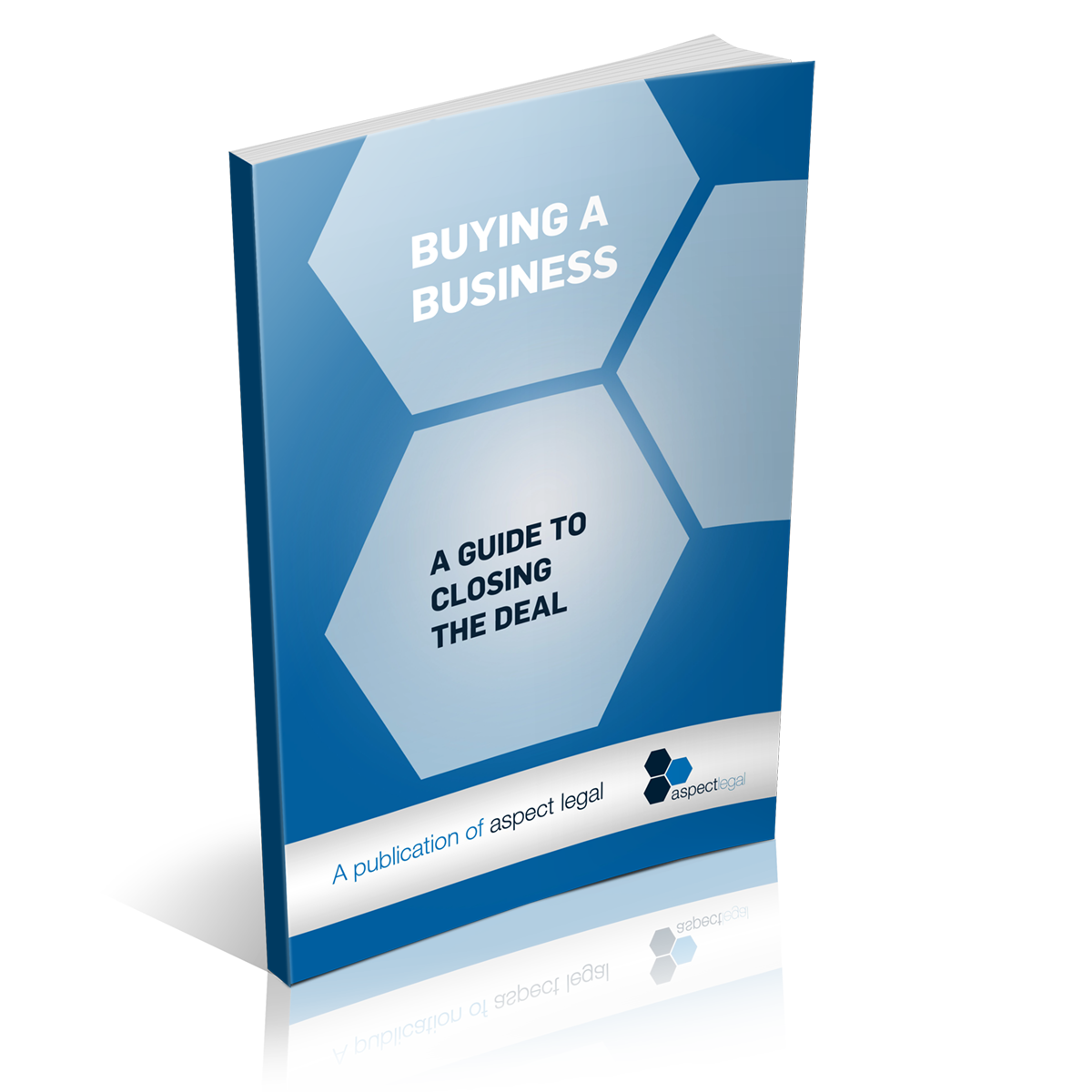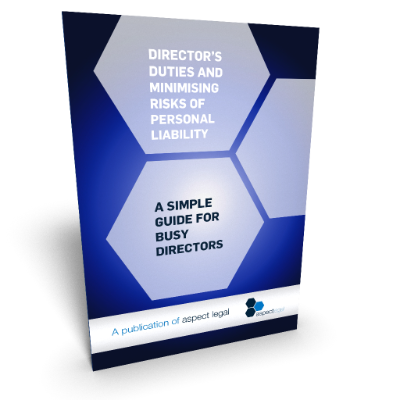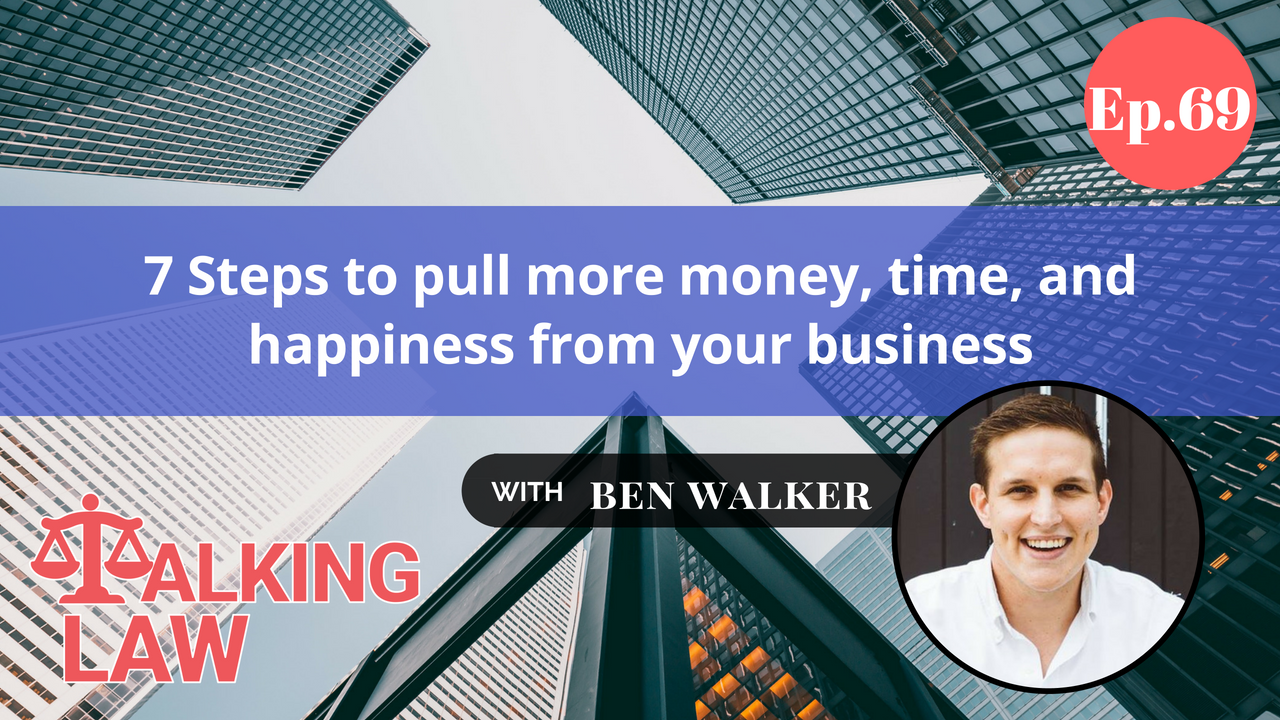
Today we are joined by Ben Walker the founder of the accounting practice Inspire CA to talk about his brand new book, where he outlines 7 steps to pull more money, time and happiness from your business.

Episode Highlights:
- Step 1: Cutting your taxes
- Step 2: Capturing your profits
- Step 3: Controlling cash flow
- Step 4: Checking your numbers
- Step 5: Cranking your business value
- Step 6: Covering your assets
- Step 7: Creating a lifestyle
Joanna: Hi it’s Joanna Oakey here and welcome back to Talking Law, a podcast brought to you by our commercial legal practice Aspect Legal.
Now today we are joined by Ben Walker the founder of the accounting practice Inspire CA. Ben’s story is an interesting one. He founded Inspire at the age of 23 based on the idea that instead of just doing tax and reporting on history, accountants just maybe could provide game changing advice that could help people write a better future for their business and their family.
Ben is a really inspiring guy so good choice of company name I think. He’s also a winner of the coveted Anthill Online 30under30 Award and a finalist in the Brisbane Young Entrepreneur of the Year Awards. And today we have the fabulous Ben Walker on the show talking about his brand new book “Cashed Up: Seven Steps to Pull More Money Time and Happiness from Your Business.”
Now this is not our usual legal topic but I feel that this is the sort of information that is really important for our listeners, and I do love the premise talking about pulling more time money and happiness for a business. So here we go!
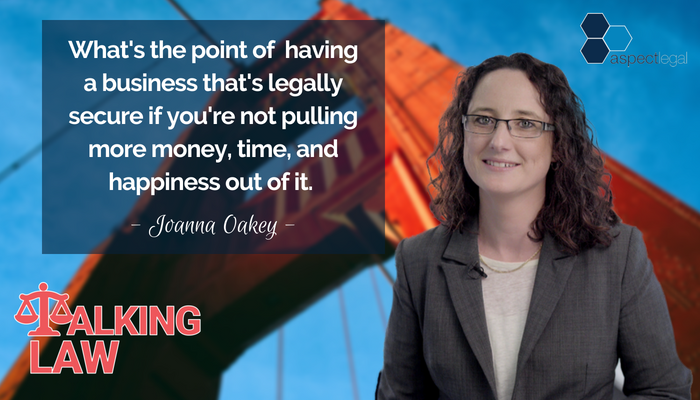
Joanna: Without further ado how about we lead in into the fact that today you and I are talking about your brand-new book “Cashed Up: Seven Steps to Pull More Money Time and Happiness from Your Business,” so Ben welcome to the show!
Ben: Thanks so much for having me Joanna.
Joanna: My absolute pleasure having you here because as soon as I saw that you had released a book, I thought oh my goodness I love the premise of that book the pulling more time, more money, and more happiness for a business and I thought like our listeners are really going to identify with this. I mean who doesn’t? Who doesn’t want that out of the business? Whilst this isn’t our usual legal topic I feel like this is the sort of information that is really important for our listeners.
So that’s why we are going off today on a little bit of a tangent from our usual legal discussions and I think there’ll be a few elements there that we will put in to talk about our legal discussions. But what’s the point of having the right foundations for a business and having a business that’s legally secure if you’re not pulling more money, time, and happiness out of it.
I guess this is a bit more of a foundational focus I think that we’re going down today so I just really wanted to start I think Ben by stepping back, before we get into the book, and I do want to get into the book. Let’s step back and talk about why you wrote the book. What was your reasoning behind writing it?
Ben: Well I guess I might take a step back even further than deciding whether I was going to write the book. I think this was kind of the decision for starting Inspire and it’s because I looked around in the accounting industry and there wasn’t too much of real value being added to clients. Well not on a broad scale anyway.
I always had a problem with things like timesheets or charging by the hour or even like accounting technology, even bookkeeping software. There was a lot of accounting firms not taking advantage of cloud technology and that sort of thing and even how they did stuff internally in their organisation was just a bit archaic.
I had a bit of a dream and some ideas of how we could do that better and always had a focus on providing as much value to our clients as possible. Fast forward a couple of years, in fact five and a half almost, five and a half years later from an impact perspective, which is what we’re so proud of was actually creating impact and helping our clients. We saved a total of over 7 million dollars in tax.
I guess from the tax conversation that’s only one part or one element where we can kind of help a client. And so, we wrote the book to Cached Up to share, not only the tax which is step one of seven in steps to getting cached up. Cutting tax is number one. We wanted to share our philosophies on quite a number of other ways that we can help our clients in a really impactful and measurable way.
Joanna: Alright, so let’s get into it then. We’ve talked about why you wrote the book. Now let’s talk about what you talk about in the book. What are the seven steps to getting cashed up and happy? I like that you include getting more happiness as well. That’s an interesting thing to include in an accounting-based book.
Ben: Yes, definitely and I think you know if we’re not happy with what we’re doing, why are we really doing it?
Most of the time we spend in our life unfortunately isn’t with our loved ones at home. For most of us, it’s actually with our team and with what we do in our business. If we’re really not enjoying that, I really want to challenge people to change that or to do things that actually make you pull more happiness out of the business.
And why we kind of picked time, money and happiness is that usually the three are interrelated somehow. If you’ve got more time back as a business owner or you sort of making a bit more money, then usually that leads on the happiness or more money might lead to more time or more time to think about some strategies that might lead to more money. There’s all sort of interlinking thing where they all help each other.
Joanna: Absolutely. Absolutely. Okay. Well it makes a lot of sense, so what are they? Take us through them. What can you do Ben? What can we do?

Step 1: Cutting your taxes
Ben: The seven steps we’ve written about are, the first one is cutting tax and so we’ve saved our clients 7 million bucks in tax. We think we know a few things about it, so that is actually our biggest and first chapter.
Joanna: In a bit of a brief summary, what are the main areas that you see providing opportunities for tax savings for business?
Ben: Absolutely. Well there’s a couple of main ones. I guess the biggest tax saving strategy is actually making sure you have the right business structure for the level of business that you’re at and what you’re doing.
There’s a couple of different structures. We’ve got sole trader, company and trust and some variations of all those. And what we see is if you’ve got the right structure, you might pay 10 20 30 thousand dollars less than having the wrong structure, maybe even more than that in some cases here. That’s the biggest bang for buck.
Joanna: Wow. Okay. And so, and I just have to reiterate on that side, you know where we see this come through in the most magnified versions is when businesses come to the point of sale. Because we do a lot of work with businesses who are at the point of sale and if they have come to us when they are already starting on the transaction, so it’s too late to clean up their business, often we can identify that if we’d only just been able to all come in first earlier with the accountants and with us together working on their structure, it could have had a massive impact on the amount that they end up taking out of the sale at the end of the day.
We’ve had instances where I believe (and I’m not an accountant, you’re the accountant here Ben) but my assessment of the situation was that in a number of cases our clients could literally have saved millions of dollars in tax. Now that’s a large amount of tax to be writing, cutting on a check to the ATO if you don’t have to, so I think structuring and its relationship to tax is a really critical thing for a business.
Ben: Yeah absolutely, and you touched on something really important there too Joanna where you mentioned if we came in at the start or earlier. Most of the strategies we write about are actually stuff that you can’t do retrospectively. You have to sort of be on the front foot with this stuff.
Unfortunately, most people or business owners don’t know about it and most accountants don’t really share these sorts of things that you know they must be fairly simple to implement but if you’re not doing them and you can’t really choose to go back and do them.
Joanna: Simple to implement at the right time. Very complicated to implement and sometimes just impossible to implement if timing’s wrong.
Ben: Yes, definitely or the ship sailed.
Joanna: Yeah. Okay great, so number one we’ve cut our tax. Where do we move to next?
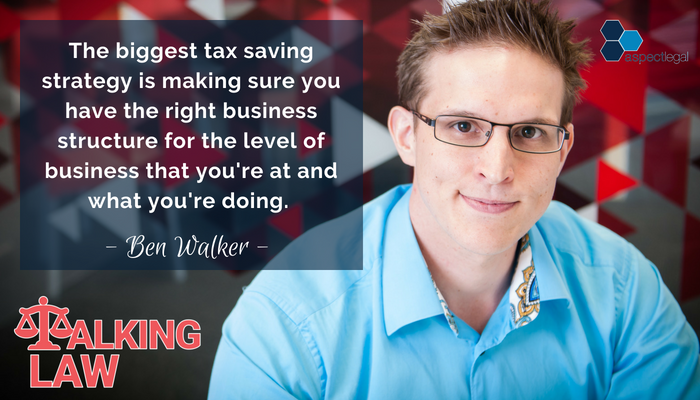
Step 2: Capturing your profits
Ben: The next one is capturing profits. If you’ve got the to the end of the year and the accountant sort of sat down with you and ran you through the profit and loss and you might see a profit line there. It might be $100,000 and you say well where’s the profit gone? It’s just a profit on paper.
Joanna: Here’s the number. Can I take that now and put it towards you know my holiday? So where has it gone Ben? Where has it gone? How do we get it back?
Ben: Yeah. Well, the idea is to not lose it in the first place and make sure you’re capturing your property. You’re literally taking it out of the business before it gets lost on paper.
The accounting answer to where it goes is usually debt or you’ve actually taken the money out, you just haven’t realised and spent it. That’s where a profit line on paper can disappear to, and if you don’t understand that stuff then yes it might be a very frustrating time to see it on paper and not have it in the bank. The best thing we can do is to actually take it out before it disappears.
Joanna: Yeah. I like it. Okay, I think everyone listening will agree with that. Let’s get that profit out!
But obviously many business owners then will say there’s a component that they want to put back in terms of allowing for growth of the business. But I guess what you’re saying is make sure that’s a considered decision not something that has happened because you haven’t understood how the numbers are working in your business and you’ve just pulled out your PNL and you think you’ve got all this profit when in reality you’ve not.
And so then where do we move to next? We’ve talked about tax. We’ve talked about profit. What’s the next element?
Step 3: Controlling cash flow
Ben: The next one is controlling cash flow. What we’re looking at there is the actual cash ins and outs of the business, some practical things to keep in mind is making sure that people who owe you money aren’t sort of blowing out or they are paying you on time.
And likewise, the people you owe money to aren’t getting frustrated because you’re not paying them. That sort of thing. Even sort of practical things like every time the BAS comes around each month or each quarter that you’ve got the money ready to go to pay that, rather than sort of getting chased by the ATO or having an anxiety every month or quarter when that BAS comes in from the accountant.
Joanna: And I think implicit in that then is also having an understanding of how much money you need to provision for each of these different areas. Now of course your accounting software. Most, many, I don’t know. Most business owners generally are sort of on top of how their accounting software works. Is that correct Ben? I don’t know. That’s my feeling is probably. But I’m not sure.
But what business owners perhaps aren’t absolutely on top of is you know how much they should be provisioning for tax for example, moving into the future because what can happen is you can have a really good year and then you know wait a bit, do your taxes but then business owners forget. Well hold on now we’ve got the catch-up tax to pay and then you know the ATO, there’ll be other catch up amounts and then suddenly we have a cash crunch in the business particularly for growing businesses.
So I think that’s a critical thing in what you’re talking about here in terms of controlling cash flow is not just provisioning, putting the cash aside. But firstly, understanding what you have to put aside. Right?
Ben: Yes, absolutely. And that one about the sort of, the catch-up tax is called the tax holiday especially for newer businesses or ones who are growing rapidly year on year, where they haven’t put it away. They usually get about a year and a quarter’s tax deal in one hit. You’re paying last year’s tax but the ATO also wants a provisional amount for the current year that you’re in so double whammy especially if you haven’t put away.
Joanna: And then we’ll be upping you know requiring installments on each BAS so you know the pain doesn’t stop. It continues, which is fine you know as you say this is due to a tax holiday is that what you called it Ben?
Ben: Yes that’s it.
Joanna: This is due to a tax holiday, which sounds like a good thing and it is a good thing. But it’s not a good thing if you don’t know about it and you’re not aware for it and you haven’t been planning for it. I guess that’s the point, right?
Ben: Definitely.
Joanna: Just talking about the cash flow side of things, because as you say a lot of this information is quite relevant for growing businesses and that’s certainly the type of business where a cash crunch can really be most intense and most dangerous I think, very quickly growing businesses.
I think this focus on debtors and debtor days is another really important thing that many business owners don’t have enough of an eye on, because it can be very easy for debtor days to creep up. But the cost to your business of a creep up in debtor days can sometimes be extremely high and far higher than you may have realised. I think the point is you’re making a really good, and it’s also about number one understanding these figures. But then number two acting on it.
From the point of perspective of your debtor days growing if you identified that then you can go back and work on the processes to ensure that your reeling these debtors in a lot quicker and that you’re taking proactive steps to reduce not increase the debtor days.
Ben: Definitely, and the one thing that really opened my mind on that one or debtor days, which is the average time it takes your customers to pay you. If you take a million-dollar turnover business, and say their average days are 30 days for customers to pay, and if you just dropped that by one day that’s going to put an average of $2700 back in the bank account. Can you imagine dropping it from 30 days down to you know two weeks or 14 days and just simply running the math on that. Not in my head by the way, in the calculator. That’s $44,000 that’s going to appear out of nowhere.
Joanna: Wow.
Ben: It’s huge.
Joanna: That’s amazing. And look and let’s I guess let’s take this to a really practical level. Now we say take from, move from 30 to 14 days. But I think we might find that many organisations who have 30-day terms are actually sitting at debtor days that are more like probably 40 or maybe 60 as their average debtor days.
If we’re looking at number one changing our terms. So rather than 30 days pushing it to 14, bringing it into 14 and then number two bringing in our debtors from being outstanding to bringing in on time. I can’t even imagine if you said we had 40 something grand in our bank account from moving from 30 to 14.
What does it look like if we’re moving from let’s say 60 to 14? That must be astronomical! Something to bear in mind I guess for all business owners out there to number one understand their figures and number two to act on it. What next? We’ve got tax, profit, cash flow. What’s the fourth element in getting cashed up?
Step 4: Checking your numbers
Ben: Number four is actually what we call checking your numbers and we’ve run through that 10 numbers that we believe you need to know as a business owner. You can tell them in the book.
Joanna: Go on. Tell us what the 10 are.
Ben: Well actually the first one I reckon is the best and if you track no other number apart from this, then you’re going to do a fair bit better or have more grasp on the numbers than if you don’t and that one is your magic number.
Joanna: Wow! What’s our magic number?
Ben: Our magic number is how much sales would your business need to hit every single week for all of your expenses to be paid, for all of your tax or debts to be paid, for you to take out a decent amount of earnings for your efforts as a business owner because you’re not here to work for free.
Unfortunately, most business owners, when you take what they take out of a business and the hours they put in, they’re borderline on minimum wage sometimes. You want to be factoring into your weekly sales targets a good amount of profit for you to take out.
Especially if you make your team or at least your sales team aware of that number and then that’s what they can sort of focus on and drive and make sure. It might be 20 or 30 thousand dollars every week must be billed or must come in the door for everything else to run.
Can you imagine if your target was call it $25,000 and you were hitting constantly $25,000 a week in sales, then imagine your stress around cashflow and worrying how you’re going to keep the lights on, it’s just going to go massively down. Yeah, if there’s one out of the ten, it’s just that magic number.
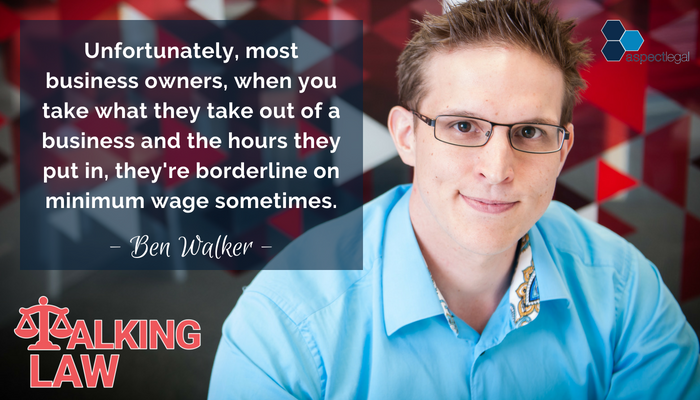
Joanna: Great. Okay, so our magic number. And then, what are the other. Maybe. How about I guess we leave a little bit of intrigue still in the book. But maybe give us the other two that make it the top three numbers.
Ben: Yep. Well the next one we’ve got number two is your team’s magic number, which is basically the most important number that’s relevant to each of your team members. Now that’s very dependent on what they do, so your sales person is obviously going to have a sales related target and a workflow or production person might have a number of units they need to produce.
Ours is actually, for our accountants, it’s actually proactive advice meetings, where we want to be having a certain amount of meetings with our clients because we know that meetings create impact for our clients and that also comes back to reward us commercially as well.
Joanna: Love it! I love the target being proactive meetings. That’s a really good target and so let’s talk about that a little bit more and maybe these two targets, the magic number for your business and the magic number for your team. How do you suggest businesses go about creating these magic numbers?
Well you talked I guess about a bit about the individual you know working out what they need it to take out. But I can hear people on the other end you know sort of saying well I mean that’s great. You know I come up with is magic number and what I need. But how do I make that realistic as well in terms of what the business can deliver? But looking at the team numbers, how do you come up with these team numbers?
Ben: It’s definitely not an easy process. You almost have to experiment with them and maybe you pick one sort of thing like proactive advice meetings. It might not be the right thing, but at least you’re sort of tracking something rather than nothing. But it just gives the team a goal almost like a target to work with so that they know on a day to day or week to week basis that they’re doing a good job in your business.
The way you set them depends on their function in the business. You might have, depending on the size of business, you might have literally an accounts receivable person and their goal obviously, we talked about before, might be to get debtor days down from 60 to constantly 7 or 0. Oh my goodness.
Joanna: Or minus, you know these companies that bill and are paid in advance. Maybe that’s the utopia.
Ben: We’re definitely one of those. We actually do project based because we know what we’re doing, we know what the price is. We know what the outcome is going to be before we do it and that’s a business model shift.
What it does is you know we’re not a bank. We’re not here to fund our invoices and so people have to have a bit of trust to be able to accept that I am going to pay quite a few thousand dollars per project, but it definitely makes the decision real for the client and we don’t have the debtor chasing. If you don’t have that system in place, we don’t have that overhead in a sense or costly on our minds.
Joanna: Yeah. And then third number out of the 10 and then everyone can go and be forced to get your book, so they can work out what the other seven are. But what’s number three?
Ben: Number three is monthly recurring revenue, so in business I think consistency around cash and sales says a lot for having more money, time and I think most days happiness. We’re not stressing about how we’re going to bring in the dollars next month, where we’ve got a certain amount of them on recurring revenue or your certain number of clients. Then it just takes a lot of the stress out of finding the difference.
A lot of software subscriptions how maybe 5 or 10 years ago, a lot of them shifted from buy this package or CD off the shelf for a thousand bucks to actually charge $75 a month. You imagine the consistency after they start building a customer base that they know what their cash flow is pretty well before the month starts.
Joanna: I love it, so the monthly recurring revenue. Fabulous. All right.
Let’s take a break
Joanna: Let’s take a short break. When we get back, Ben continues down the list with steps 5 to 7 in his seven steps to pulling more money, time, and happiness out of your business. And that’s next! You are listening to Joanna Oakey and Talking Law, a podcast brought to you by our commercial legal practice – Aspect Legal.
Our General Legal Services
Are you looking for a top quality legal team to assist you in your organisation?
Aspect Legal is an innovative commercial legal practice that specialises in providing fast and professional services for their clients. Our commercial legal services cover a wide spectrum of disciplines – contract law, dispute resolution, business sales and acquisitions, brand protection and IP.
We work with clients both large and small, and we’re all about helping you grow while protecting you from the unexpected storms of business. If you’d like to chat about how we might be able to assist you, simply head over to our website at aspectlegal.com.au to book in time for a free discussion with one of our lawyers. So get in touch today!
Welcome back
Joanna: Welcome back! Earlier, Ben walked us through the first four steps in his seven-step plan to pulling more money, time, and happiness out of your business. As a quick reminder, step 1 was of course cutting your taxes, step 2 was capturing your profits, step 3 was controlling cash flow and step 4, which we drilled into just before the break, is all about checking your numbers. Now let’s jump back to our conversation with Ben, and talk about step 5 in getting all cashed up.
Joanna: We’ve talked about tax, profit, cash flow, numbers. Where are we at for number five in getting all cashed up?
Step 5: Cranking your business value
Ben: Yeah. This one, which I think you’ll definitely love, given you deal with quite a few business owners getting ready for this is cranking your business value and potentially ready for sale.
Joanna: Perfect. Okay. Love it. And so, what’s your thoughts on the best way businesses can look to do this?
Ben: Yeah. Well generally businesses are valued on a multiple of their profit, and so the formula for that is your profit times your profit multiple equals your business value in most situations. There are some industries or businesses that might be paid for their revenue, on the basis of their revenue. But we might go with sort of most businesses off the profit line, and so one of the things we can do is definitely bump up our profit.
But on the sales multiple or the profit multiple, I have a personal belief that if you’re going to get a higher multiple, then you’ve got to have less risk in your business. We start taking out the risk. Again, a very practical example of taking out the risk is monthly recurring revenue. If you’ve got a certain amount of sales coming in each month, that’s less risk for the new owner or the person you’re selling to when they’re buying into it. Having a solid team, having structure, having systems in the business where you can put a new team member in there or get a new owner and they are very quickly up to speed with what the business does and how and the nature of how they do, what they do with the business.
Joanna: I think it’s a really good point because just anecdotally we’ve never done any research on it but from what we can see it seems that organisations that have recurring revenue streams, so dependable locked in recurring revenue streams, will generally from what we’ve seen achieve a higher multiple than those with less predictable income streams.
And I guess it’s about predictability because buyers will want to feel that there is certainty in the value of the asset that they’re buying, right? They want to feel that they can extract the same value that’s there, at least the same value that that’s been there in the financials that they’re seeing in the business.
I guess the other elements that I’d add for cranking business value are, as you say reducing risk. Of course from a legal perspective, we would say making sure that you’ve de-risked the business or reduced risk in a business from a legal perspective. But it’s also about I guess systems and processes. It’s the way you run a business as well, and in our experience that’s something that really feeds into higher multiples. When a new buyer can come in and the systems, the business runs predictably with certainty on its own on the basis of the systems that have it built.
Ben: Absolutely. That’s it.
Joanna: Okay, so we’ve cranked our business value. Where do we go to now Ben?
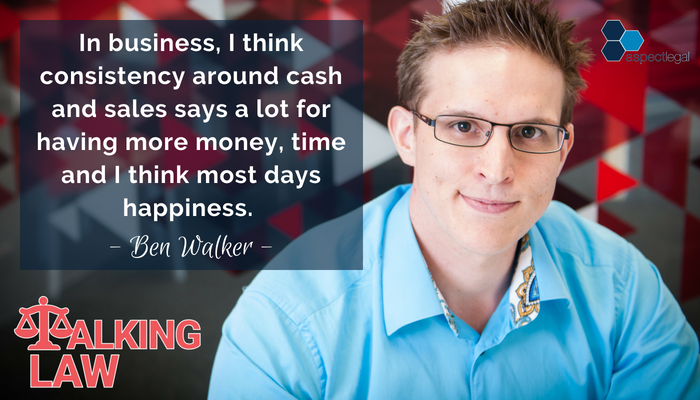
Step 6: Covering your assets
Ben: Now what we find is when people sort of or their business become worth a lot more money or even personally their wealth is increasing, then they need to be careful of covering their ASSets.
Joanna: I like that emphasis! ASSets! Love it!
Ben: Yup. Often people don’t worry about asset protection until they need it. The problem with that is it’s usually quite difficult to achieve if end up in an emergency. You need some form of asset protection.
This is one of the things like tax planning strategies where you need to get right in advance. We’ve written a couple of different things on how you can use different business structures to achieve some level of asset protection.
The way I usually talk about it is it is a continuum of people’s acceptability to risk. How comfortable are you with risk? Are you happy just being out there ready to be sued whenever you turn the corner? Cool. You might have a low level. For some people, especially once you’ve built a bit of wealth, are very concerned. That’s a very high priority for them. We want to be able to help clients match their level of the level of risk with an appropriate business structure and how they hold their family wealth.
Joanna: Okay, I think that this makes absolute sense and of course from a legal perspective, we’re very focused on protection which extends to the protection of the owners own assets.
What are some of the ways that you look at in your book for covering off this area? So structure, you talked about structure as one element. Are there other areas that you also consider?
Ben: Yeah, absolutely. We actually have rules. There’re rules of asset protection. One of them is separating your business risk, so the actual business entity from your personal assets. Things like don’t be a sole trader and own your home in your own name as a ridiculous example.
Joanna: Absolutely.
Ben: Another sort of, so rule number two is choose a risk taker and an asset person in a family where you’ve got a spouse. That basically means that as the risk taker you might be the director of the company. If anyone’s going to sue the company or potentially you, you as the director you’re going to take the fall. The asset person holds the family assets or wealth, and so even if the risk taker is sued, they basically turn in their pockets inside out and say look, I’m not worth anything.
Joanna: This is a really interesting one, because some of our listeners will probably say okay well that’s obvious. Yes, I know all about that. But for some of our listeners they may not be aware of how important this principle is.
When I deal with people, who say for example have a business and they’ve got both husband and wife directors of the company for example. You must see this a bit. You know when we have new clients coming into us we run them through a legal review process quite often then and this will often be something that will identify as part of that process. But quite often why it happens is, and then you know the assets are all in joint names as well. But quite often why it happens is because people have these I think it’s an emotional connection. This feeling that they should both be directors of the company, because emotionally they both feel that they’ve created the company or whatever the reason is.
But then from an asset position, it’s well I don’t want to feel that they’re holding, or you know what I mean? I think there’s this emotion about who they feel is participating, who really owns things because of the way the names, the ownership name we’re giving to various things. I think business owners have got to get over that is my position.
Ben: Absolutely. My wife and I bought a block of land and we’re sort of building a house at the moment. It was huge going actually no, Stevie, you’re going to be signing everything. We literally had to tell the builder probably about four or five times, to change the name back to Stevie because they kept writing Ben and Stevie.
But I think it’s liberating once you understand the differences between risk taker and asset person. Not that I think the goal in business is to go out and be silly and try and do things so dangerously or that your intention is pretty much get sued. But it’s just those unfortunate things that might pop up in business that you go oh okay, we’re not doing so well here, or you made a mistake with a customer and it’s almost like I don’t want to lose my house because of something that’s happened in the business. So that’s the sort of thing we’re trying to avoid. I’m not trying to encourage phoenixing and unethical business practices.
Joanna: Yeah. I think the other element though is when look let’s get real business can be really hard, right? There’s almost no business owners that I’ve met that have come to having built really solid strong businesses that haven’t had periods where crap has happened, markets have changed, things have become dire in the business for one reason or another.
The reality though is that if you have this concern that your assets outside of the business are exposed as well as your assets of the business, I think it can create a far more difficult emotional environment than the business owner who can sit there and make decisions on the basis of well we have a segregated approach to here’s business assets and those outside, those are personal assets that are protected.
Of course we have the option of using things like trusts and other structures other than holding things in personal names that can assist in providing asset protection. But the reason behind this is to I think one of the real reasons behind it is to really helping create that absolute separation between business and personal and allow the business owners the space when things aren’t going right to not be overtaken by emotion.
Ben: Yes, definitely. Sometimes the elephant in the room, so just to add there is the question that always comes up when I sort of share about this in a group or even one to one meetings with clients is what about divorce. So if I put everything in my husband’s name or if I put everything in my wife’s name and they go and take off, then what’s the sort of recourse for me to not be left without anything. And I’m not a family lawyer.
Joanna: And all disclosure, I’m not either so full disclosures here. We are not giving any advice in relation to family law right now. We’re just chatting.
Ben: That’s it. And I have checked with two different family lawyers and they basically say that the assets you build together as a husband and wife are actually considered marital assets. And so in the case of the divorce, the family courts don’t usually see it as 100% asset person’s assets and the risk taker owns nothing. They’ll see it as a pool and never or very rarely understand it as split 50/50. It totally depends on what’s happened and all that sort of stuff.
Joanna: My understanding is that in family law matters your structure becomes a bit irrelevant, as you’re saying so don’t let that be a reason. But having said that, neither Ben nor I are giving advice right at the moment in relation to family law. We’re just telling it as we have been you know passing on information that we’ve heard over time. Good work. Good work.
Look we laugh but I have to say it’s actually a quite common concern that is raised with me as well so I think it is on people’s minds.
Ben: Definitely.
Joanna: I think we’re up to number seven. Lucky last here. What’s the last one of getting cashed up here Ben?

Step 7: Creating a lifestyle
Ben: Yeah, well it’s last but it’s kind of the most important we reckon and it’s called creating lifestyle.
We just basically don’t want to be working away all our lives and not really thinking about spending time with our families or having some holidays throughout the year and that sort of thing. And so basically we put this chapter in just to remind everyone why we’re kind of doing this.
When I sort of ask clients and other business owners why they set their business up, in most cases it was either more freedom of time or money to spend with their families doing things that they love. We just want to kind of remind people to you know take some holidays literally. I’m pretty sure we’re going near to take eight to 12 weeks of holidays a year.
Joanna: Wow. Is that the recommendation? Eight to 12 weeks?
Ben: Absolutely.
Joanna: I love it. I love it. And do you do that Ben? Do people in your organisation sort of follow along on this idea?
Ben: Absolutely. So that’s Harvey and I’s goal. We pre-plan that a year in advance so we basically want to have holidays booked in and then our events or our seasons in the business fit around that. And to be honest it sounds a little bit. What’s the word, I need a word here.
Joanna: Fun?
Ben: Aspirational. And that doesn’t mean for 12 weeks a year that I’m totally disconnected or I totally don’t have a worry in the world about Inspire or there is nothing. Holidays look like a little bit of work here and there but I mean you’re there to kind of spend time with family and basically not get you know retirement or selling the business and go geez I just missed half of the events in my life because I didn’t take the time to d stuff.
Joanna: Really good. I mean what a great, what a great point to end on there I think that’s a really good one. I bet there’s a lot of listeners out there who aren’t taking anywhere near that 8 to 12 weeks that you’re recommending here. Maybe that in itself then seems like a bit too much of a lofty goal to start with but you know maybe just add a couple of extra weeks here this year and then aim to add a couple of extra more the following year and work yourself up to this 8 to 12.
Ben: That’s it. Absolutely. It’s not that you go from zero to 12 in a few months or your first year. Definitely make provision for it. And you know funnily enough, when you see yourself in a holiday and you know that let’s say it’s Tuesday in the week and on Friday is your last day before you leave for a couple of weeks on holiday, it’s amazing the amount of work you get done in that week.
Joanna: How productive are you in that last space. That’s so true. So yeah, good point. Like if we go on more holidays, we’ll have more productive bursts. I like it. I’m working with that Ben. I’m holding you to that.
Ben: Yeah. You come back refreshed. Yeah, definitely.
Joanna: Fabulous. Okay Ben thank you so much for your time today. It’s been an absolute pleasure talking to you. If our listeners are keen to get their hands on a copy of Getting Cashed Up, where do they go?
Ben: Yeah, it’s fairly easy to find. It’s on our website at inspire dot business forward slash book. And you can buy Cashed Up on there and it’s usually in the mail that day and in your letterboxes in 2 or 3 days later.
Joanna: Fabulous. Okay wonderful. Well look we’ll put, just in case your out for a run, walking the dog, driving to work at the moment and you aren’t able to write that down, we’ll be linked with now show notes so we have to do is pop over to our show notes and we’ll link right there through to the book and we’ll also link through to Ben and Inspire in case you want to find out a little bit more about the work that he does with their clients over it Inspire.
Wonderful. Thank you so much Ben for all of your time. Hopefully you have a fabulous day and thanks for all of the information you’ve shared.
Ben: Thanks so much Joanna. Yeah. Again much appreciate you having me on the podcast.
Joanna: That concludes today’s episode with Ben Walker of Inspire CA, where we talked about his brand new book Cashed Up: Seven Steps to Pull More Money, Time, and Happiness from Your Business. Again, as a quick recap, the seven steps are:
Step 1: Cutting your taxes (Who doesn’t want to do that!?)
Step 2: Capturing your profits
Step 3: Controlling cash flow
Step 4: Checking your numbers
Step 5: Cranking your business value
Step 6: Covering your assets
Step 7: Creating a lifestyle
We hope that today’s discussion inspires you to grab a copy of Ben’s book and to seriously consider implementing the steps outlined in his book so that you too can pull more money, time, and happiness from your business – because we certainly believe that you absolutely deserve it!
I hope you enjoyed what you heard today. If you did, please subscribe to Talking Law on iTunes or your favorite podcast player to get notifications straight to your phone whenever a new episode is out.
Thanks again for listening in! This has been Joanna Oakey and Talking Law, a podcast proudly brought to you by Aspect Legal.
Our General Legal Services
Are you looking for a top quality legal team to assist you in your organisation?
Aspect Legal is an innovative commercial legal practice that specialises in providing fast and professional services for their clients. Our commercial legal services cover a wide spectrum of disciplines – contract law, dispute resolution, business sales and acquisitions, brand protection and IP.
We work with clients both large and small, and we’re all about helping you grow while protecting you from the unexpected storms of business. If you’d like to chat about how we might be able to assist you, simply head over to our website at aspectlegal.com.au to book in time for a free discussion with one of our lawyers. So get in touch today!
Disclaimer: The material contained on this website is provided for general information purposes only and does not constitute legal advice. You should not depend upon any information appearing on this website without seeking legal advice. We do not guarantee that the contents of this website will be accurate, complete or up-to-date. Liability limited by a scheme approved under Professional Standards Legislation.
